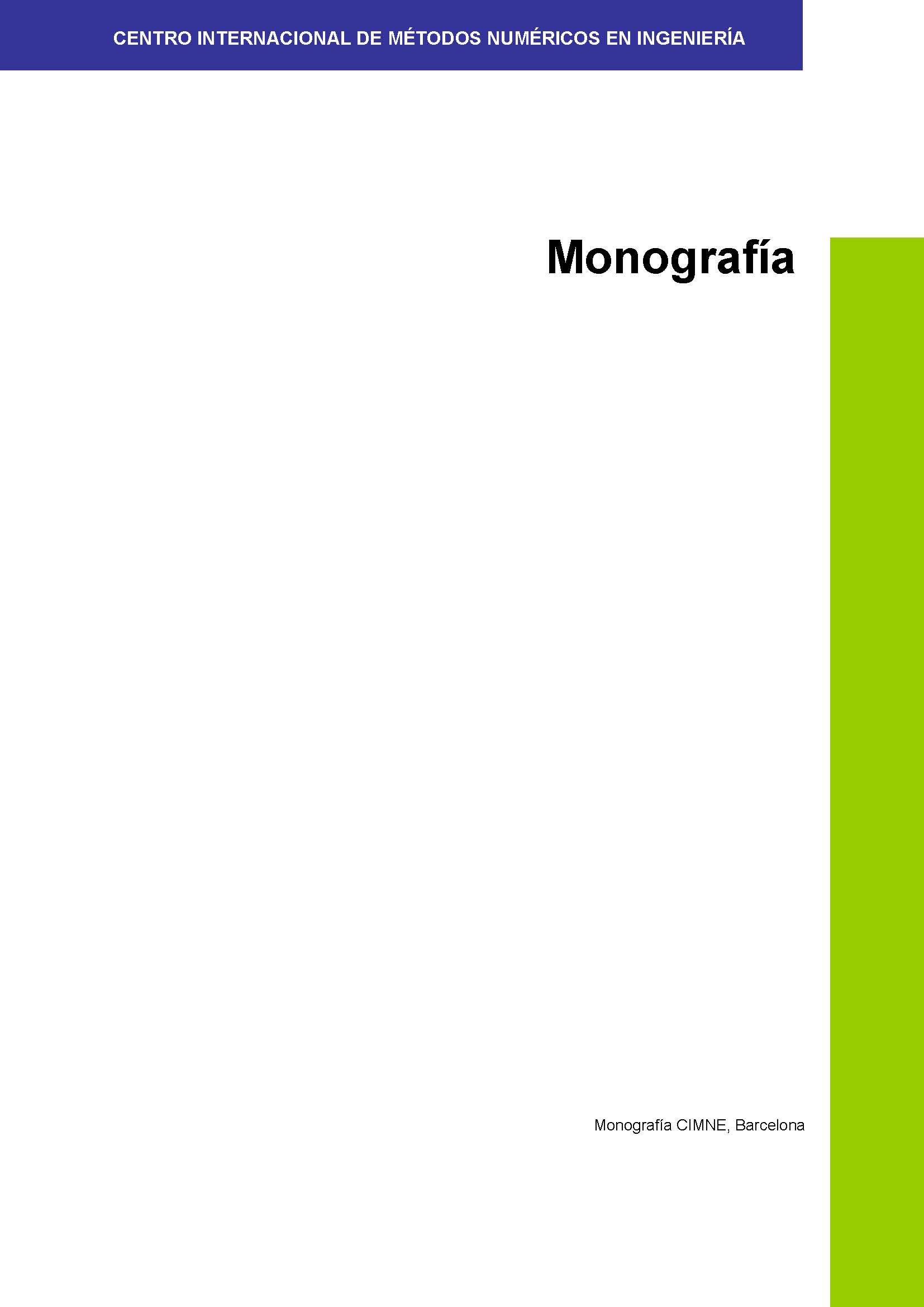Advances in the Development ofthe Discrete Element Method for Excavation Processes
FREE!
ISBN: 978-84-940243-5-1
Editorial: CIMNE
Year of publication: 2012
Pages: 213
Index: Introduction, The discrete element method, Discretization of the media, Estimation of the discrete element parameters, Coupling scheme with the nite element method, Modelling of rock cutting process, Summary and conclusions, Micromechanical stress tensor, Micromechanical strain tensor
ISBN: 978-84-940243-5-1
Editorial: CIMNE
Year of publication: 2012
Pages: 213
Index: Introduction, The discrete element method, Discretization of the media, Estimation of the discrete element parameters, Coupling scheme with the nite element method, Modelling of rock cutting process, Summary and conclusions, Micromechanical stress tensor, Micromechanical strain tensor
Description
Modelling of granular materials, soils and rocks has been a challenging topic of investigation for decades. Classical continuum mechanics has been used to idealize soils and rocks, and numerical solution techniques such as nite element method (FEM) has been used to model these materials. Considering the idealization of the material, continuum mechanics allows the analysis of phenomena with discontinuous nature such as fracture in rock or soil via damage models. However, in more complex processes like rock milling or crushing, this kind of models are usually not suitable. Discrete models are more appropriate for problems with multiple discontinuities and particulate materials.
The discrete element method (DEM) has been gaining popularity in analysis of granular materials, soils and rocks. Many aspects of this method still require more profound investigation.
This work presents new developments of the discrete element method improving eciency and accuracy of modelling of rock-like materials, especially in excavation processes. All the numerical algorithms has been implemented in an in-house software, which was then used to run numerical examples.
The basic formulation of DEM with linear elastic-perfectly brittle contact model is presented. The main dierence with other models found in the literature is the consideration of global stiness and strength parameters that are constants in the whole model.
The result of a simulations is strongly related with the conguration of the particle assembly used. Particle assemblies should be suciently compact and ensure the isotropy to reproduce the physical properties of the modelled material. This work presents a novel technique for the generation of highly dense particle assemblies in arbitrary geometries, satisfying all the requirements for accurate discrete element simulations.
One of the key issues in the use of the DEM is the estimation of the contact model parameters. A methodology is proposed for the estimation of the contact model parameters yielding required macroscopic properties of the material. The relationships between the contact model parameters and the mechanical properties of brittle materials, as well as the in uence of the particles assembly conguration on the macroscopic properties, are analysed.
A major diculty in the application of the DEM to real engineering problems is the high computational cost in simulation involving a large number of particles. The most common way to solve this is the use of parallel computing techniques, where multiple processors are used. As an alternative, a coupling scheme between DEM and the nite element method (FEM) is proposed in the work. Within the hybrid DEM/FEM model,
DEM is only used in the region of the domain where it provides an advantage over a continuum-based approach, as the FEM. The coupling is dynamically adapted, starting with the whole domain discretized with FEM. During the simulation, in the regions where a high stress level are found, a change of modelling method from continuum FEM to the discrete DEM is employed.
Finally, all the developments are applied to the simulation of a real excavation process. An analysis of the rock cutting process with TBM disc cutters is performed, where DEM and the DEM/FEM coupling technique presents an important advantage over other simulation techniques.

